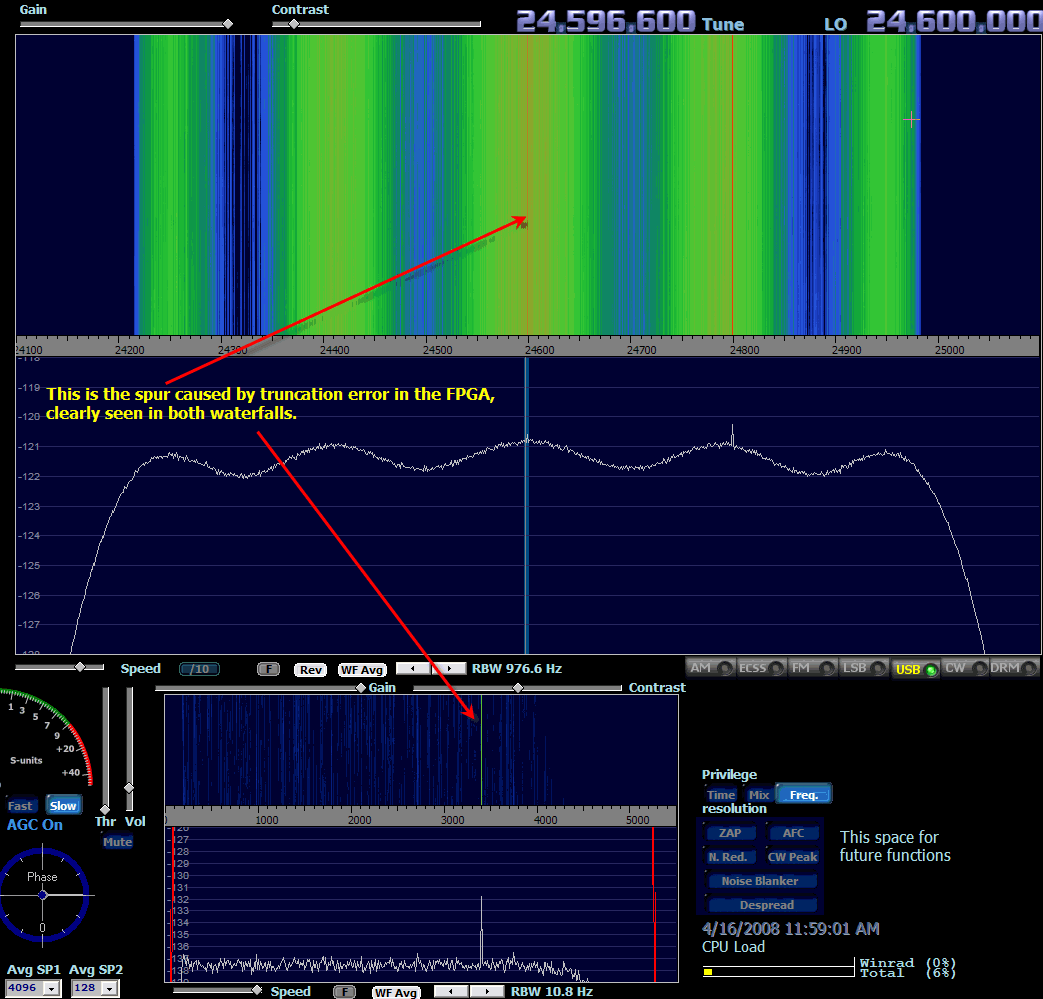
Perseus with Winrad
April 15, 2008
These are a few screen captures taken with the Perseus receiver and the Winrad software, with the purpose to show what the waterfall/spectrum sensitivity of Winrad can be, when properly adjusted. The Perseus receiver antenna input was closed on a 50 ohm termination, and the sampling rate after the DDC was set to 1 MHz.
Two faint signals were present, one at 24.8 MHz, which is a spur acknowledged also by Nico IV3NWV, the designer of Perseus, and another, weaker, spur at 24.6 MHz, the center of the band after the DDC, caused by small rounding errors in the FPGA code that performs the DDC. Both are clearly visible with Winrad, when correctly set.
This first screen capture shows what is possible to see, when Winrad is left at its default settings. Both signals are completely invisible.

In this second screen capture, the Winrad parametrs have been correctly adjusted, and you can see both signals, with the spur at 24.8 MHz zoomed in in the bottom waterfall.

And finally, in this third screen capture, what has been zoomed in is the spur at 24.6 MHz, the center frequency of the downconverted band.

The conclusion is that Winrad is a tool quite capable of not only doing the normal tasks of an SDR, as demodulation and filtering, but also can be used as a weak signal search tool, for example for EME work
73 Alberto I2PHD